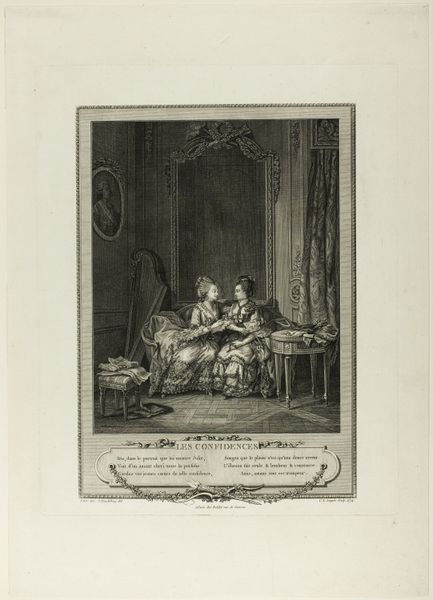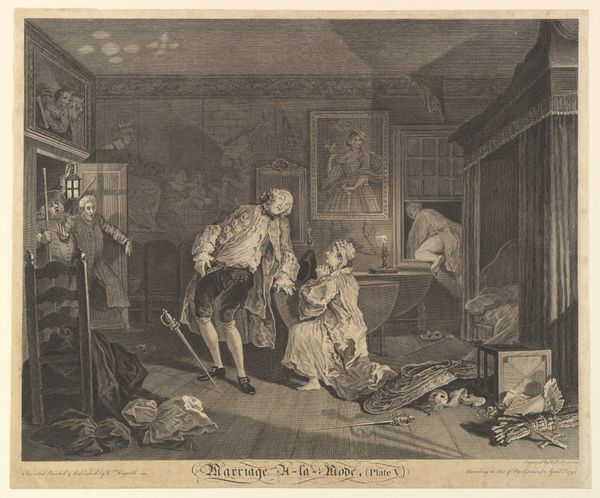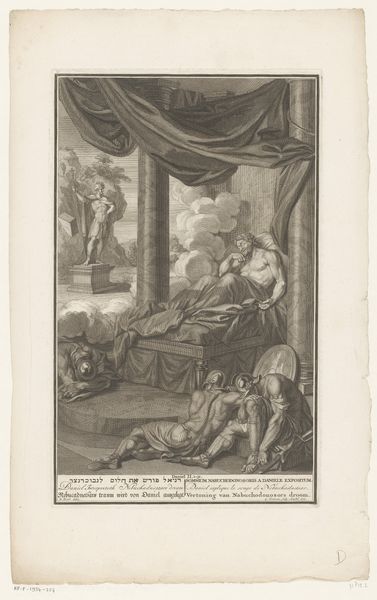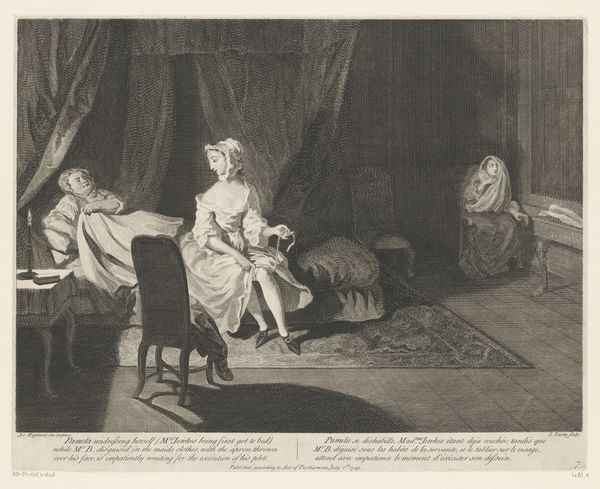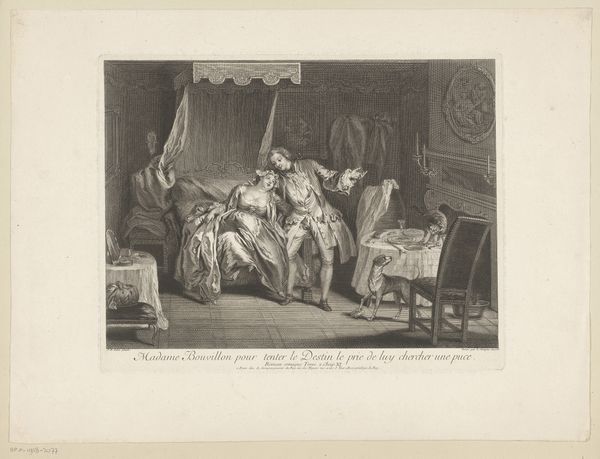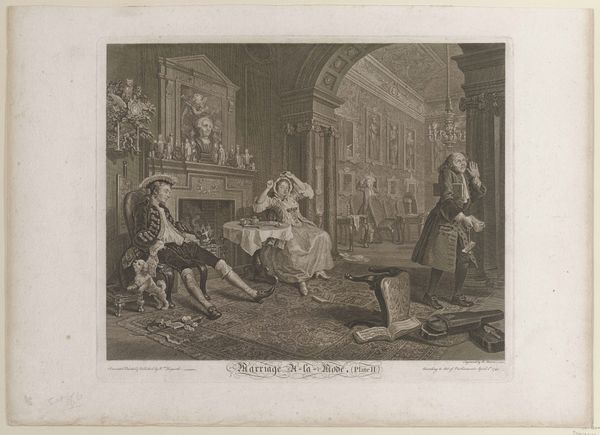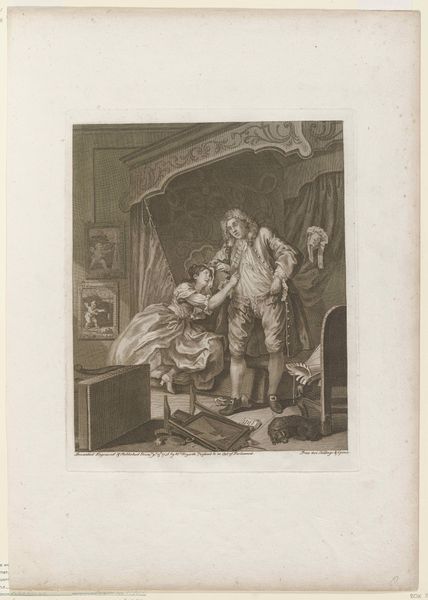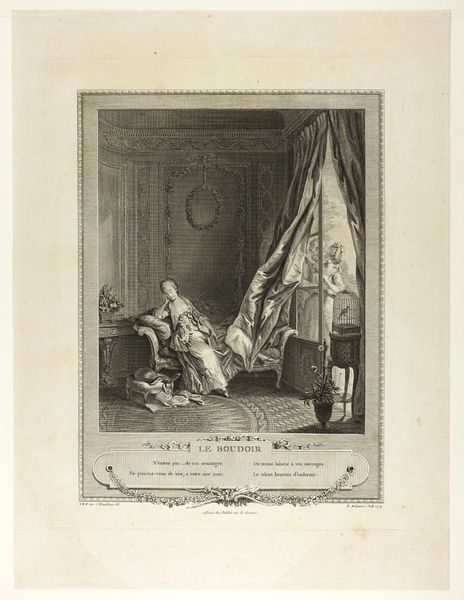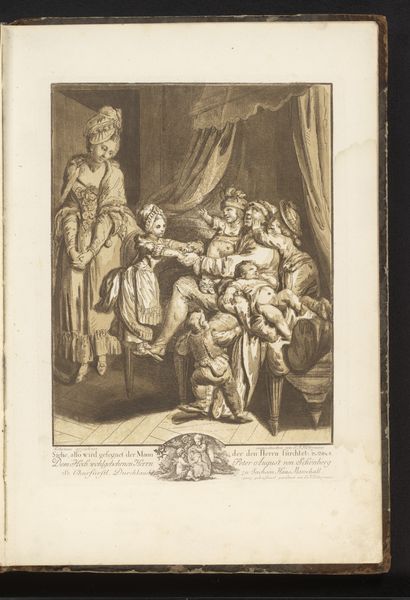
Byblis schrijft haar broer Caunus een liefdesbrief c. 1636 - 1670
0:00
0:00
print, engraving
#
portrait
#
narrative-art
#
baroque
# print
#
figuration
#
history-painting
#
engraving
Dimensions: height 167 mm, width 230 mm
Copyright: Rijks Museum: Open Domain
Curator: What a dramatic scene! This is "Byblis schrijft haar broer Caunus een liefdesbrief", or "Byblis Writes a Love Letter to her Brother Caunus," an engraving dating from the mid-17th century, somewhere between 1636 and 1670, created by Crispijn van de Passe the Younger. We're fortunate to have it here at the Rijksmuseum. What's your take on it? Editor: Tormented, definitely tormented! Look at her face – half shadowed, the tear about to fall. And that’s before you even register the faintly disturbing subject matter. It’s like a spotlight’s been shone on this very dark, intimate moment. Curator: Indeed, the myth of Byblis is ripe for visual interpretation. It's all about forbidden love, you see, Byblis overcome with passion for her own brother, Caunus. The engraving captures that turmoil. Notice how the bed is slightly unkempt, the candle burns low, adding to this sense of passionate disarray. It is far more theatrical and dynamic than other examples from the same period. Editor: It's so heavy with implication. The darkness and shadow create an almost suffocating atmosphere. That monkey on the leash… could that be a symbol of Byblis’ own trapped desires, bound by social convention? And there is the presence of another couple at the far left, partially framed in the doorway – what is their role here? Witnesses or accessories to this dark and intimate moment? Curator: An astute observation regarding the monkey. Iconography tells us animals often represent base instincts, things we're supposed to control. As for the other couple, perhaps they are another viewpoint entirely, removed, in their own realm of experience – yet forever caught in the peripheral. There is another character too, have you seen the feline perched on the artist’s table? The Dutch often associated cats with secret and deception in artworks from this period. Editor: The artist’s included details certainly amplify the emotional distress… I find it a bit…voyeuristic? Though I suppose that's part of its power – to make us uncomfortably aware that we're intruding on something deeply personal and potentially destructive. Curator: Perhaps it is precisely this tension, the conflicting desires both within the figure and, by implication, within ourselves, that Van de Passe wanted to provoke. It’s not merely a representation of the myth but an exploration of the boundaries between love, obsession, and societal constraints. Editor: It really does stay with you, doesn’t it? After really looking, I can't dismiss it, it holds a dark fascination… that I both appreciate and mistrust.
Comments
No comments
Be the first to comment and join the conversation on the ultimate creative platform.

